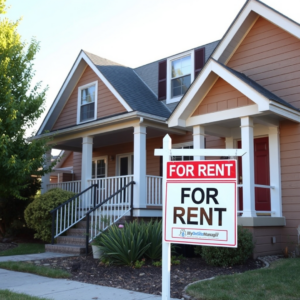As of January 2025, mortgage rates in the U.S. have once again crossed a significant threshold, with 30-year fixed rates rising above 7%—the highest they’ve been since May 2024. This increase marks a continuation of the financial strain facing potential homebuyers and signals deeper, systemic issues in the country’s housing market.
What’s Driving Mortgage Rates Higher?
The rise in mortgage rates comes on the heels of persistent inflation, with shelter costs remaining one of the largest contributors. In the latest Consumer Price Index (CPI) report, housing was among the most inflationary components, making up over two-thirds of the monthly price increases.
In response to inflationary pressure, the Federal Reserve has maintained higher benchmark interest rates to cool consumer demand. While this strategy is meant to stabilize prices across the economy, one of the unintended consequences is its ripple effect on mortgage lending rates—making borrowing significantly more expensive.
Affordability at Breaking Point
For many Americans, the dream of homeownership is slipping further out of reach. At a 7.09% average rate, the monthly cost of financing a home has surged. Consider this: on a $400,000 home with a 20% down payment, a 7% mortgage rate results in a monthly principal and interest payment of roughly $2,135—excluding taxes and insurance. This is hundreds of dollars more than what homebuyers would have paid just a couple of years ago when rates hovered around 3%.
These higher borrowing costs come on top of already high home prices, creating a double burden. This has forced many would-be buyers to stay in the rental market longer than planned—only to find little relief there.
Rents Keep Climbing
The rental market is not faring much better. Nationwide, the median rent has climbed to approximately $2,000 per month. With limited housing supply and strong demand, rent increases continue to outpace wage growth, squeezing the budgets of millions of Americans. As fewer people can afford to buy homes, demand for rentals remains high, further compounding the issue.
A Deepening Inventory Crisis
According to Freddie Mac, the U.S. remains short by approximately 3.7 million housing units. Despite a modest increase in housing inventory—up 17.7% year-over-year to 1.33 million homes by November 2024—supply remains far below what’s needed to meet demand.
One major contributor is the “lock-in effect.” Many existing homeowners who previously locked in record-low mortgage rates (some below 3%) are reluctant to sell and give up their advantageous terms. As a result, new listings remain scarce, reducing market fluidity and driving up prices.
Long-Term Outlook
Most experts agree that mortgage rates are unlikely to return to pandemic-era lows any time soon. Freddie Mac’s Chief Economist Sam Khater has projected that rates will likely remain above 6% through 2026. While the labor market remains strong—a factor that typically supports consumer confidence and spending—it also means inflation is more stubborn, making it harder for the Fed to justify rate cuts in the near term.
What Can Buyers Do?
Khater advises homebuyers to shop around and get quotes from multiple lenders, as this could help secure a slightly lower rate. Buyers might also explore adjustable-rate mortgages (ARMs), down payment assistance programs, or consider moving to areas with lower housing costs.
For renters, this may be the time to evaluate long-term leasing options, roommate arrangements, or local assistance programs if rent becomes unsustainable.
Final Thoughts
The current rise in mortgage rates is more than just a financial statistic—it’s a defining factor reshaping the American housing landscape. For younger generations, first-time homebuyers, and middle-income families, the path to ownership has become more complex and costly. With both the rental and buying markets under pressure, government policies, housing development incentives, and innovative lending strategies may all need to play a role in restoring balance.
Until then, navigating the housing market in 2025 will require patience, strategy, and a clear understanding of the financial trade-offs at play.
Source:
Mortgage rates top 7%, soar to highest level since May in latest blow to homebuyers

